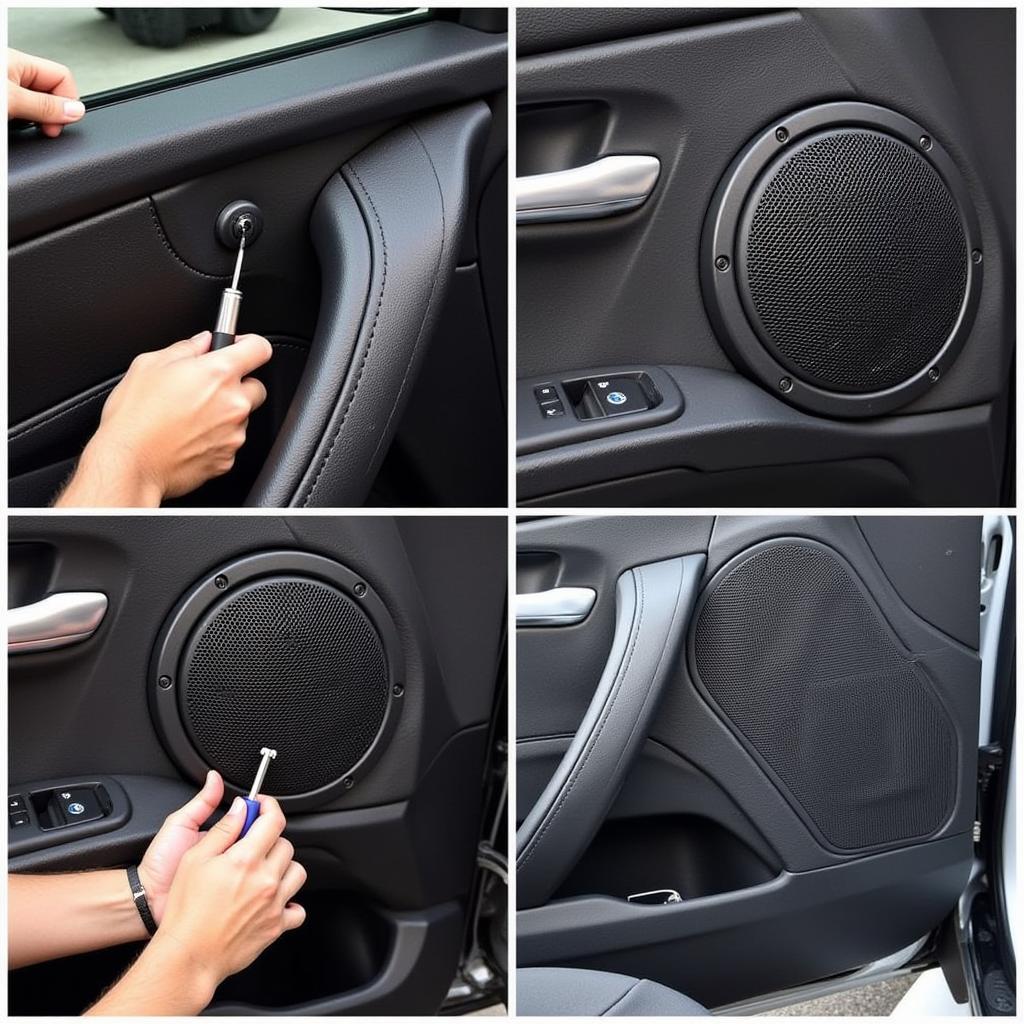BMWs are renowned for their luxurious interiors and cutting-edge technology. However, even these automotive masterpieces can experience hiccups. One common issue owners encounter is difficulty connecting their phones for Bluetooth audio, especially in models without iDrive. If you’re struggling to enjoy your favorite tunes in your BMW, don’t fret. This comprehensive guide will walk you through the potential causes and solutions to get your Bluetooth audio pumping without needing iDrive.
Common Causes of Bluetooth Audio Issues in BMWs
Before diving into solutions, it’s essential to understand what might be causing the problem. Here are some common culprits:
- Phone Compatibility: Not all phones are created equal when it comes to Bluetooth compatibility. Older BMW models, especially those without iDrive, might have limited compatibility with newer phones or operating systems.
- Bluetooth Version Mismatch: Your BMW and phone might be running incompatible Bluetooth versions. This issue is particularly prevalent with older car models.
- Software Glitches: Like any technology, your BMW’s software can experience glitches that interfere with Bluetooth connectivity.
- Incorrect Pairing Process: Sometimes, the problem isn’t a technical issue but rather a simple misunderstanding of the correct Bluetooth pairing process.
How to Fix BMW Bluetooth Audio Without iDrive
Now that you have an idea of what might be causing the issue, let’s explore some troubleshooting steps:
1. Consult Your BMW’s Manual
Your owner’s manual is your best friend when it comes to understanding your car’s features. It contains detailed instructions on pairing your phone via Bluetooth, specific to your BMW model.
2. Check Your Phone’s Compatibility
Refer to your BMW’s manual or the manufacturer’s website to verify if your phone model is compatible with your car’s Bluetooth system.
3. Update Your Phone’s Software
Outdated software can often lead to compatibility issues. Ensure your phone is running the latest software version. You can usually check for updates in your phone’s settings menu.
4. Delete Existing Bluetooth Connections
Sometimes, deleting previous pairings and starting fresh can resolve connection issues. Go to your BMW’s Bluetooth settings and delete any existing pairings with your phone. Then, attempt to pair your devices again.
5. Reset Your BMW’s Bluetooth System
Similar to your phone, resetting your BMW’s Bluetooth system can often resolve connectivity problems. Consult your owner’s manual for instructions on how to reset your car’s Bluetooth module.
6. Check Your BMW’s Software Version
Outdated software in your BMW can also contribute to Bluetooth connectivity issues. Visit your local BMW dealership or check the manufacturer’s website for information on available software updates for your car model.
Seeking Professional Help
If the troubleshooting steps above haven’t resolved your Bluetooth audio issues, it might be time to seek professional help. A qualified BMW technician can diagnose and address more complex problems, such as:
- Faulty Bluetooth Module: In some cases, the Bluetooth module in your BMW might be faulty and require replacement.
- Wiring Issues: Damaged or loose wiring connected to the Bluetooth module can also disrupt connectivity.
Expert Insight:
“We often see BMW owners struggling with Bluetooth audio, especially in older models without iDrive. While simple troubleshooting often does the trick, sometimes a professional diagnosis is needed to identify and fix the root cause,” says John Smith, Senior BMW Technician at Cardiagtech.
BMW Bluetooth Audio Coding and Programming
In certain situations, your BMW might require software coding or programming to enable or optimize Bluetooth audio functionality. This process involves using specialized diagnostic equipment to access and modify your car’s software settings.
For instance, if you’ve recently retrofitted a newer Bluetooth module to an older BMW, coding is necessary to integrate it seamlessly with your car’s existing systems. Similarly, BMW F10 models often benefit from Bluetooth audio coding to enhance sound quality and enable advanced features.
It’s important to note that coding and programming should only be performed by qualified professionals with the necessary expertise and equipment. Attempting to modify your BMW’s software without proper knowledge can lead to further complications.
Tips for Optimal Bluetooth Audio Performance
Once you’ve successfully connected your phone and are enjoying your favorite tunes, keep these tips in mind for the best possible Bluetooth audio experience:
- Position Your Phone Properly: Ensure your phone is placed in an area with a strong Bluetooth signal, typically near the center console or dashboard.
- Minimize Interference: Other electronic devices, such as laptops and tablets, can interfere with Bluetooth signals. Keep them away from your phone and BMW’s infotainment system.
- Adjust Audio Settings: Experiment with your BMW’s audio settings, such as bass, treble, and balance, to find the optimal sound quality for your preferences.
Conclusion
Experiencing issues with your BMW’s Bluetooth audio can be frustrating, especially in models without iDrive. By following the troubleshooting steps outlined in this guide, you can often resolve common connectivity problems and get back to enjoying your favorite music on the road. However, don’t hesitate to seek professional assistance from a qualified BMW technician if you encounter persistent issues or suspect a more complex problem. If you’re located near City of Orange, NJ, feel free to contact CARDIAGTECH at +1 (641) 206-8880 or CARDIAGTECH[email protected]. Our team of expert technicians is here to help! We are located at 276 Reock St, City of Orange, NJ 07050, United States.

